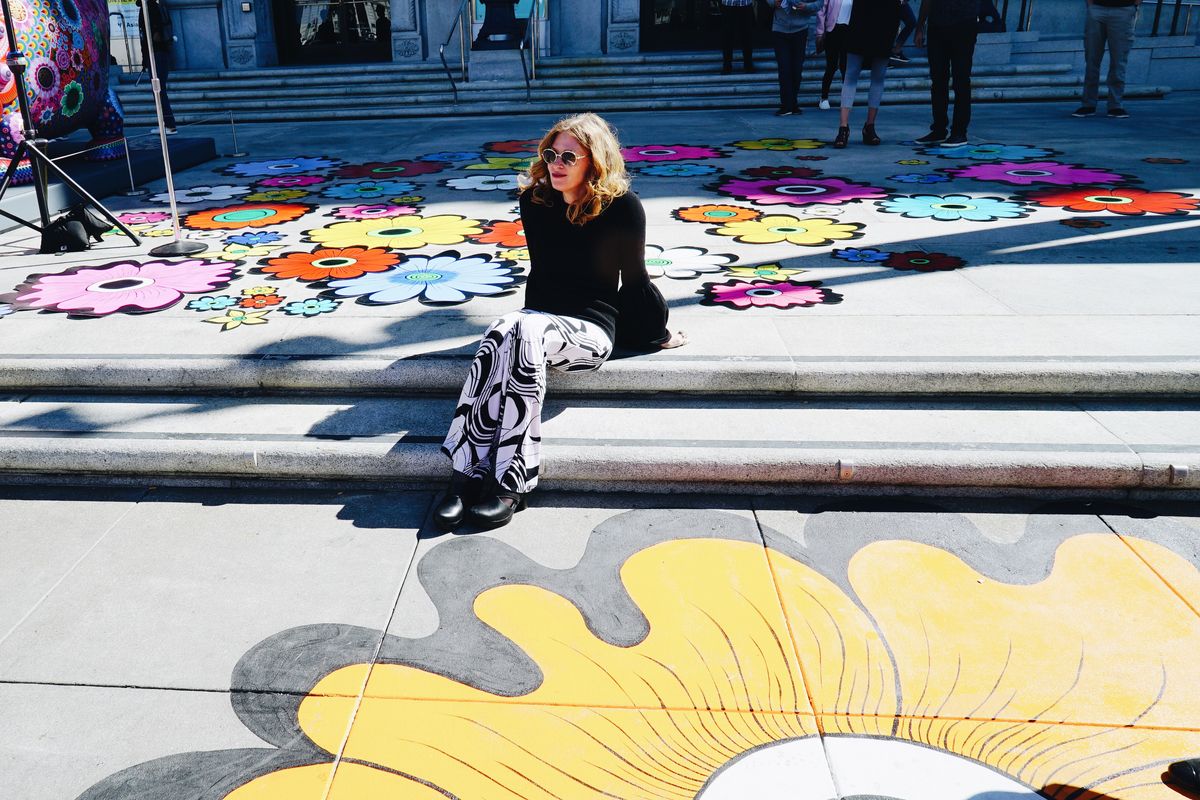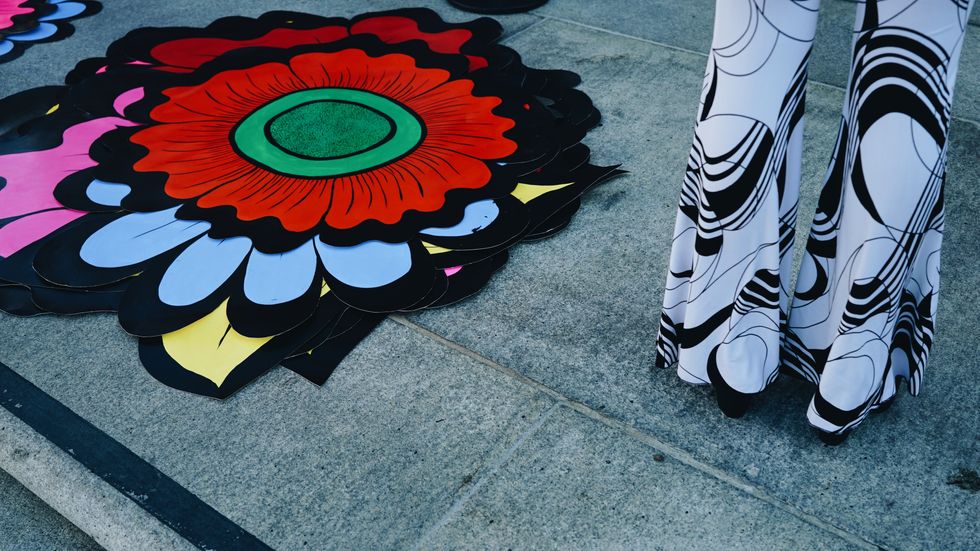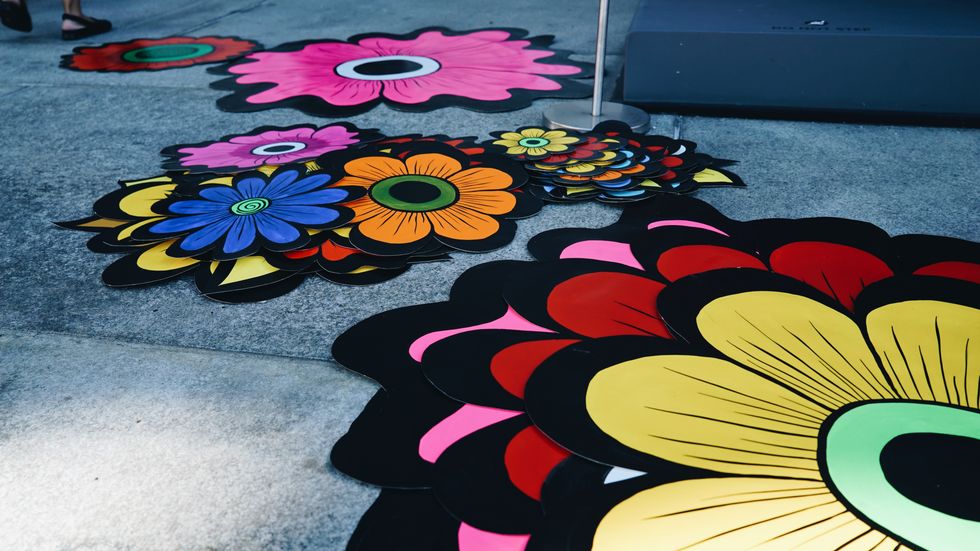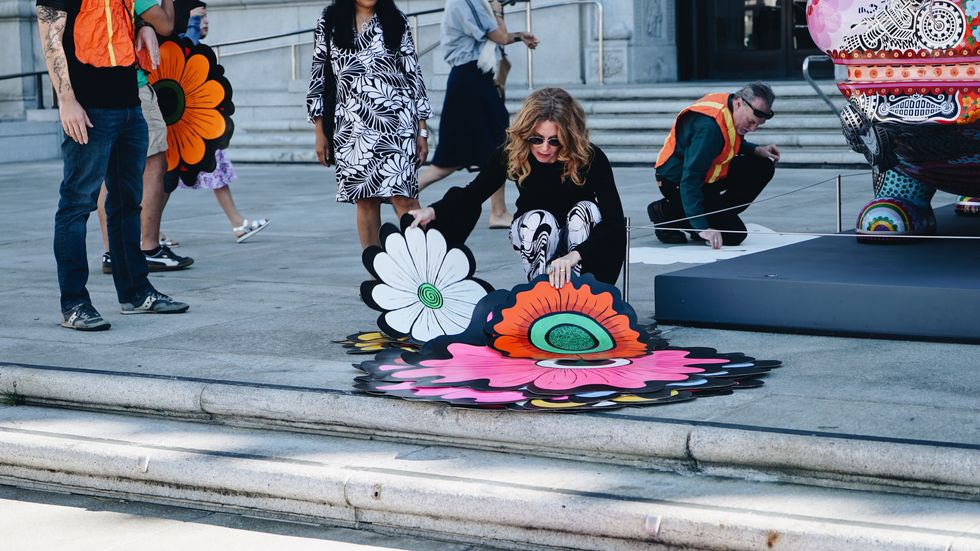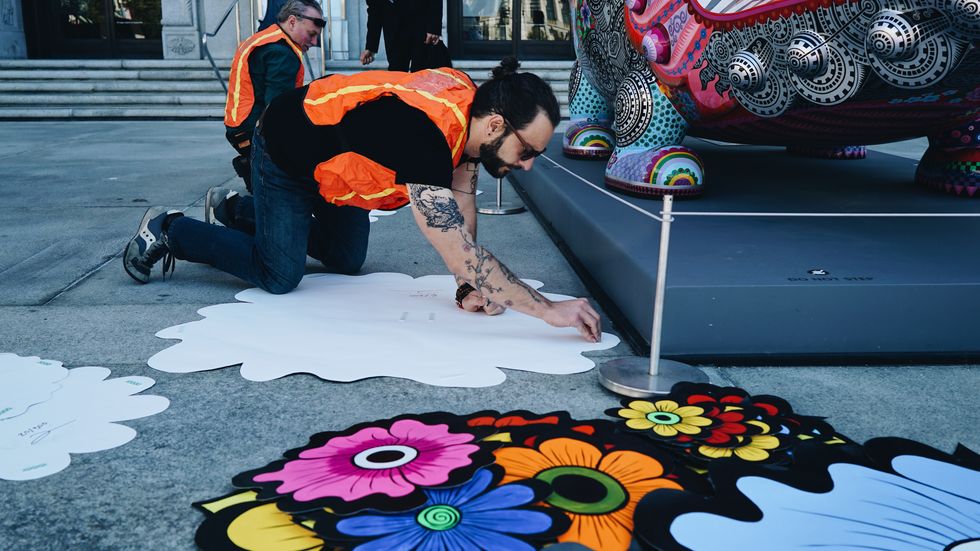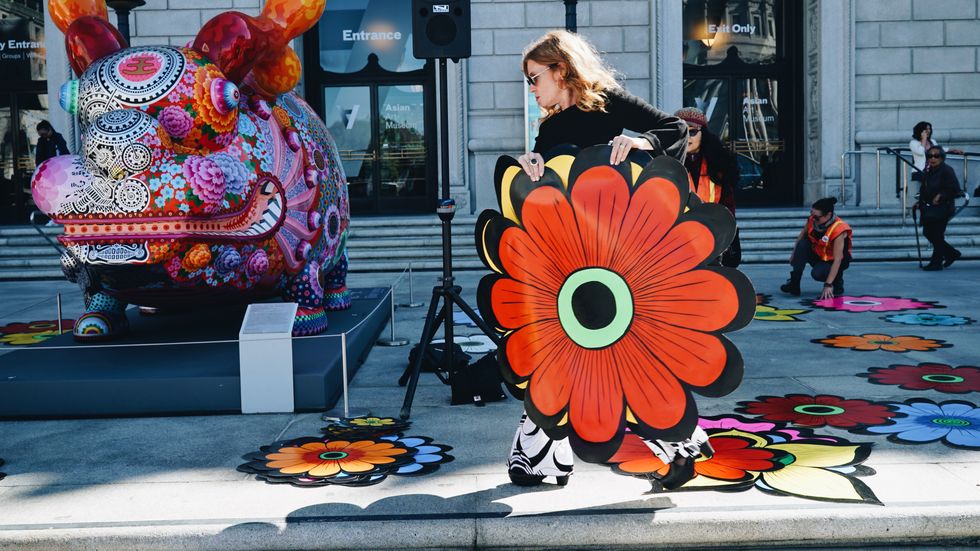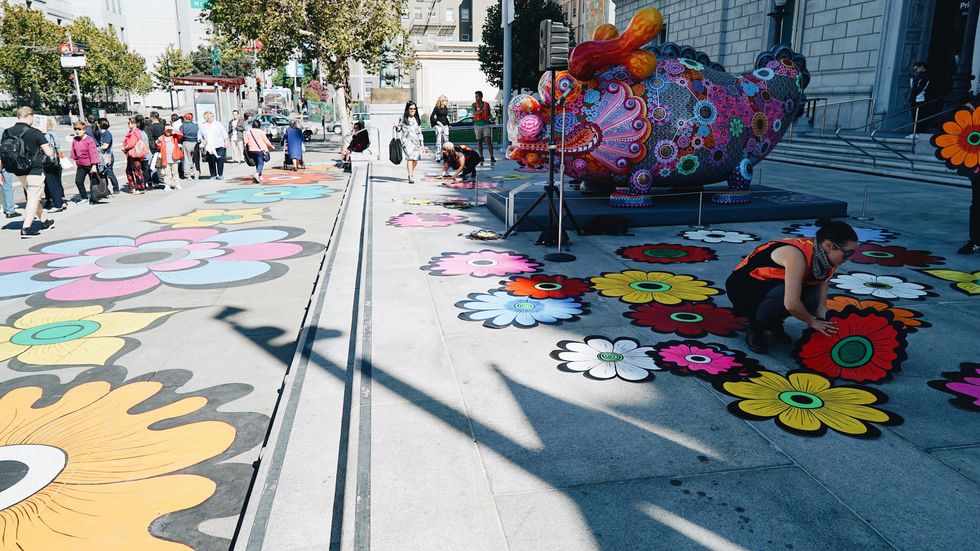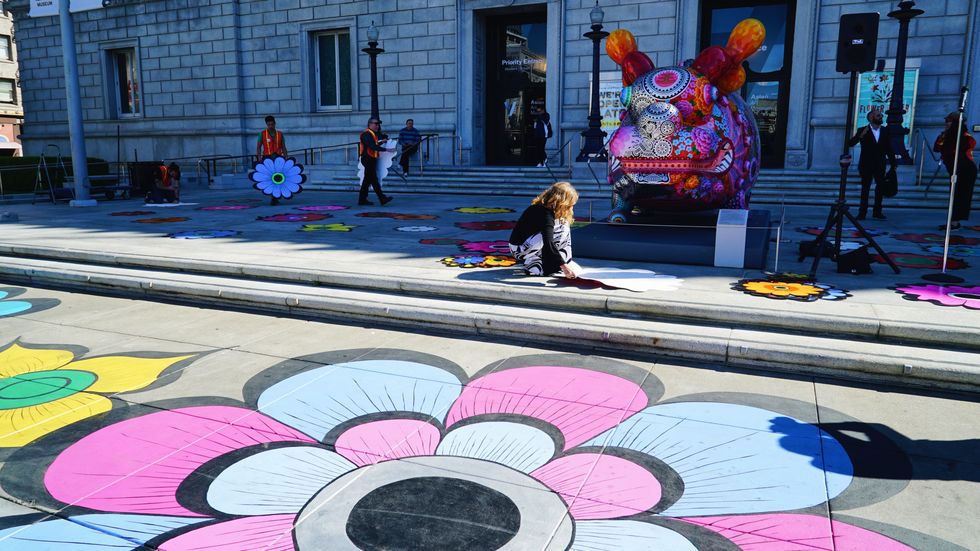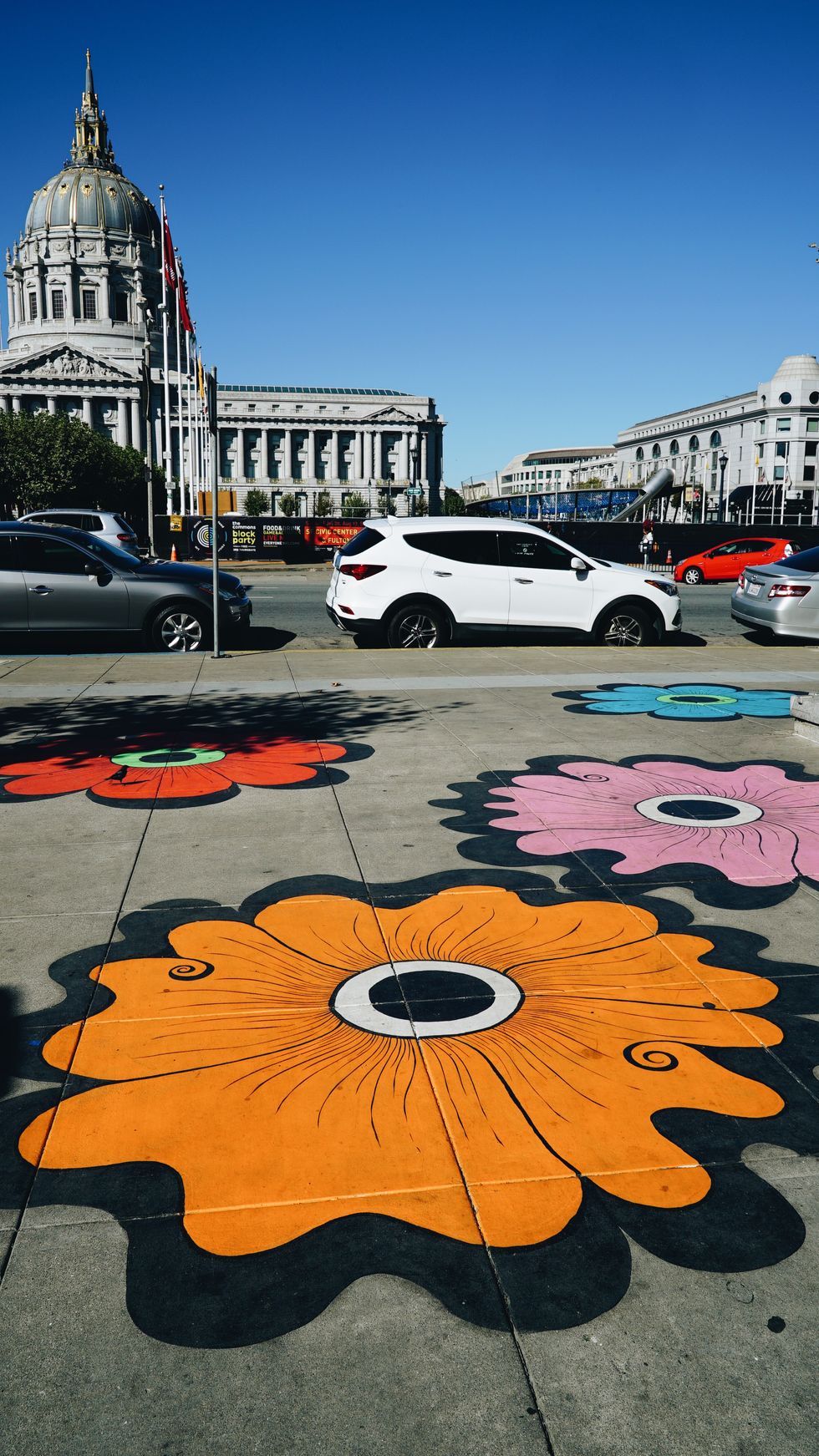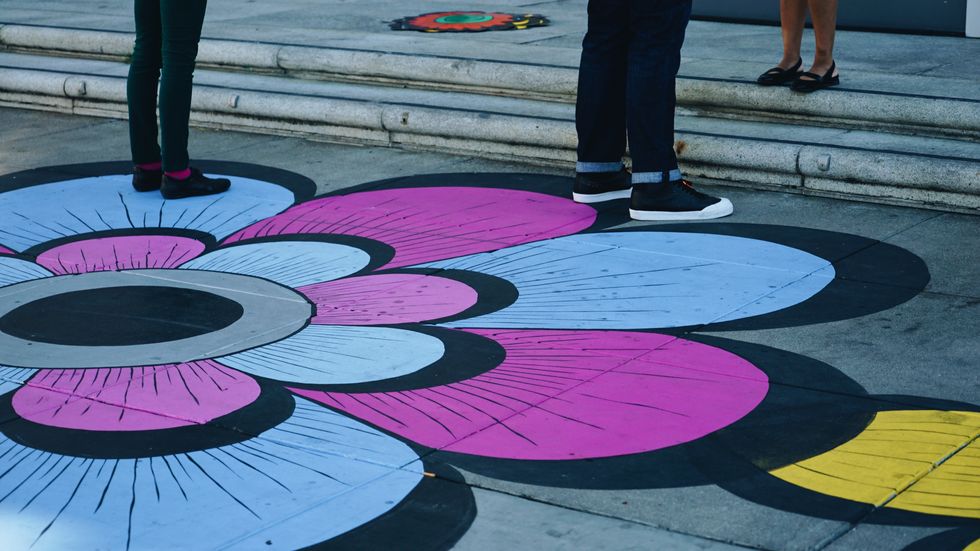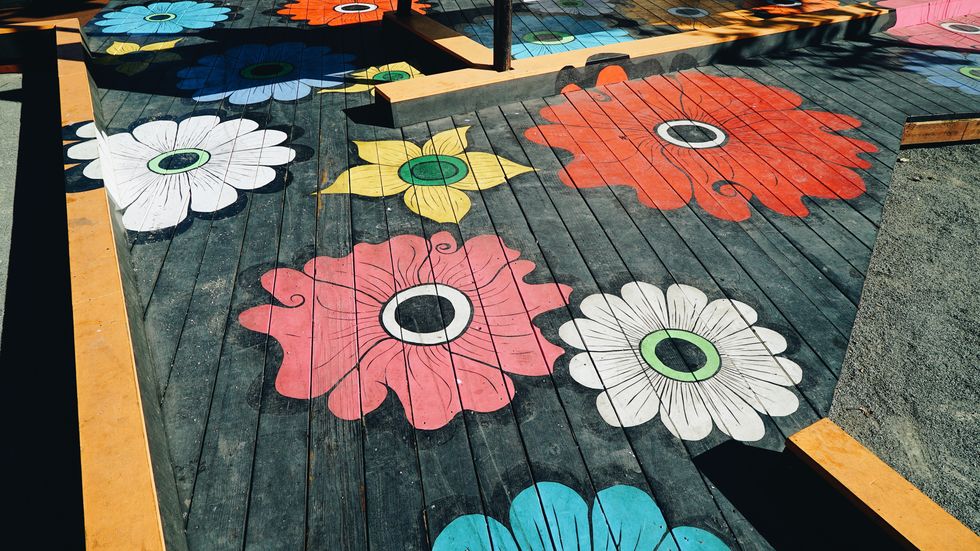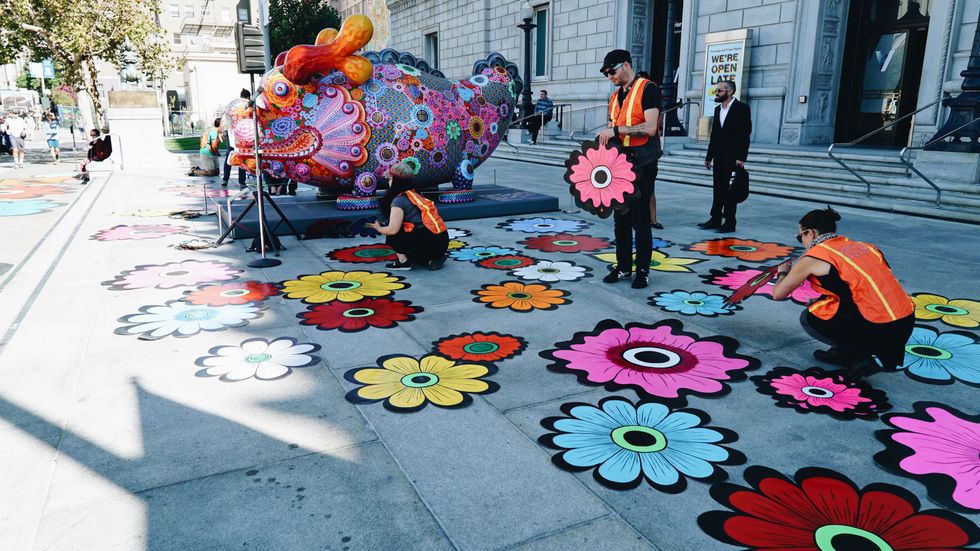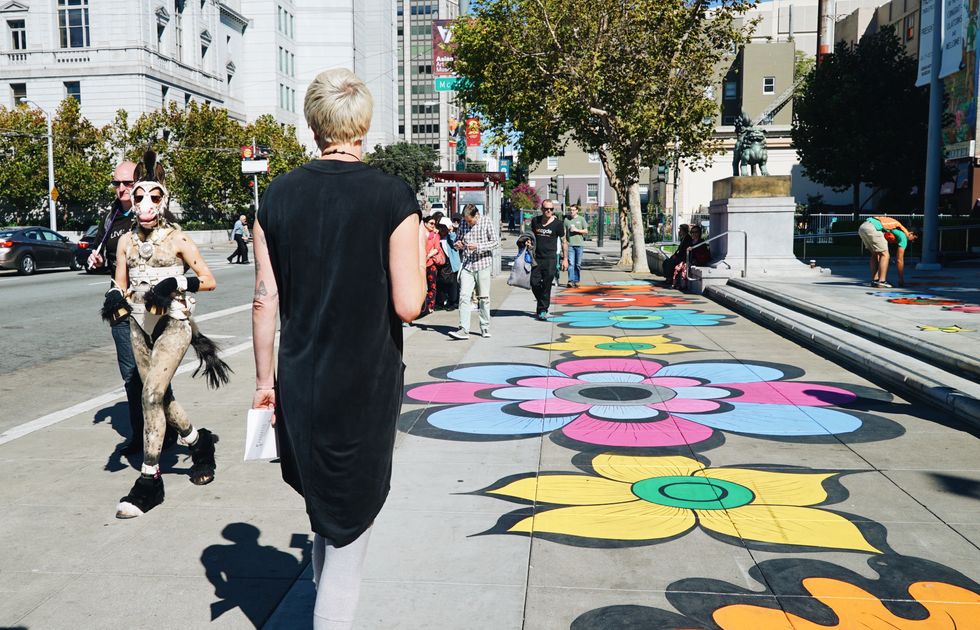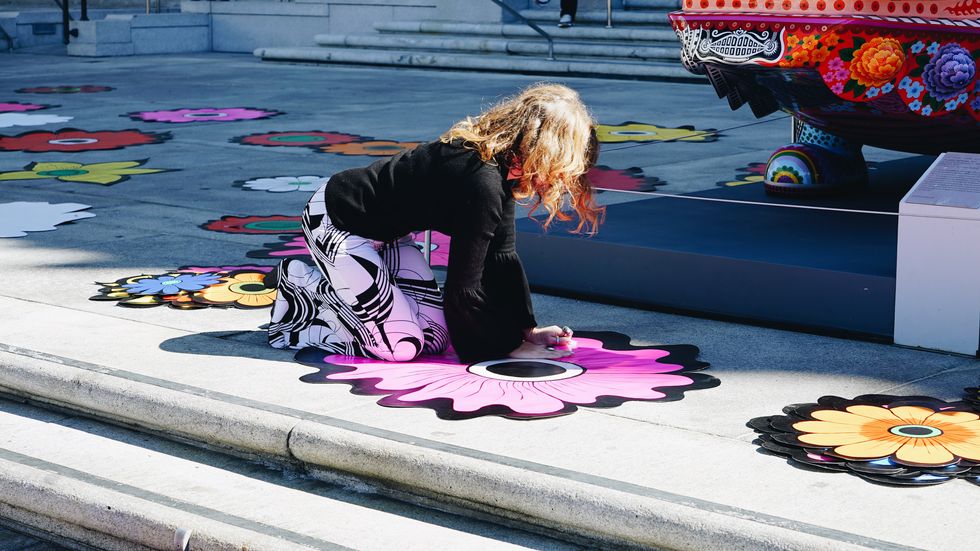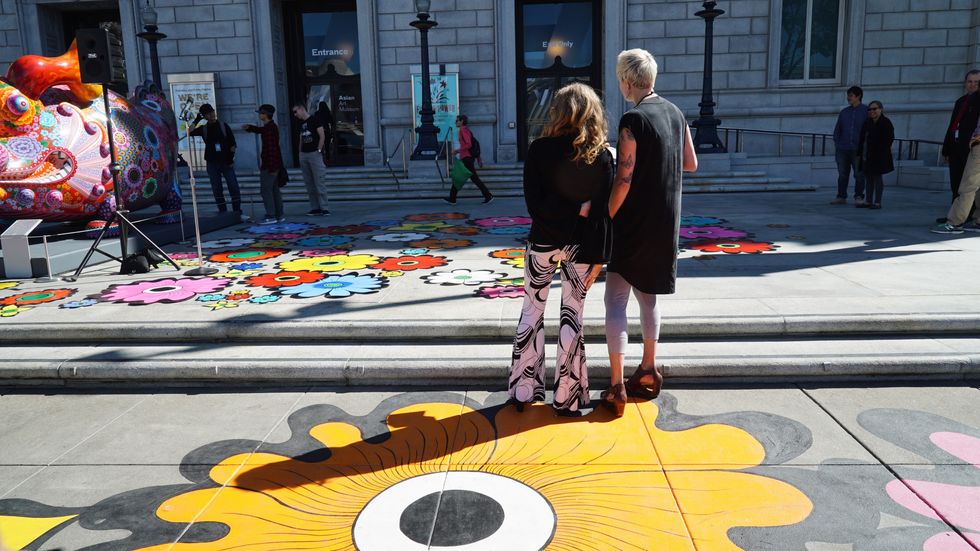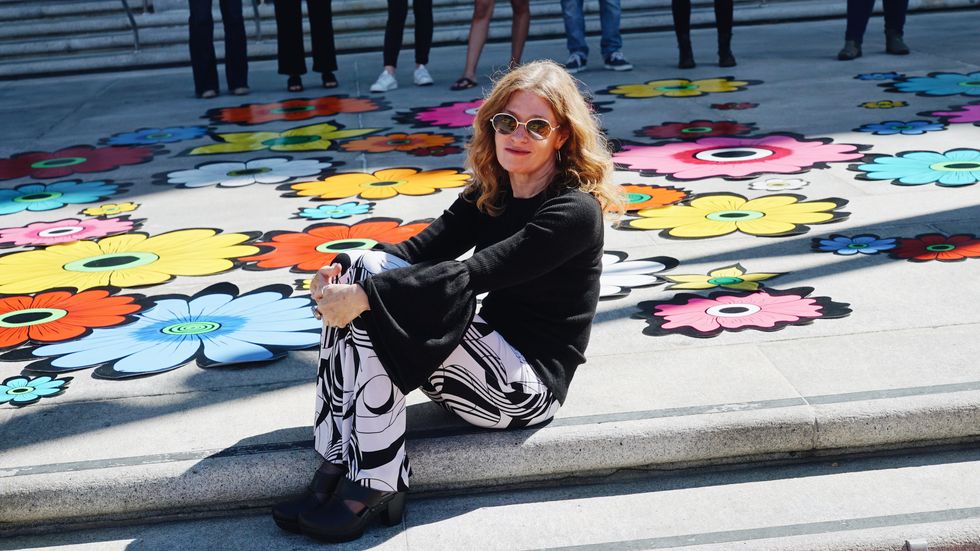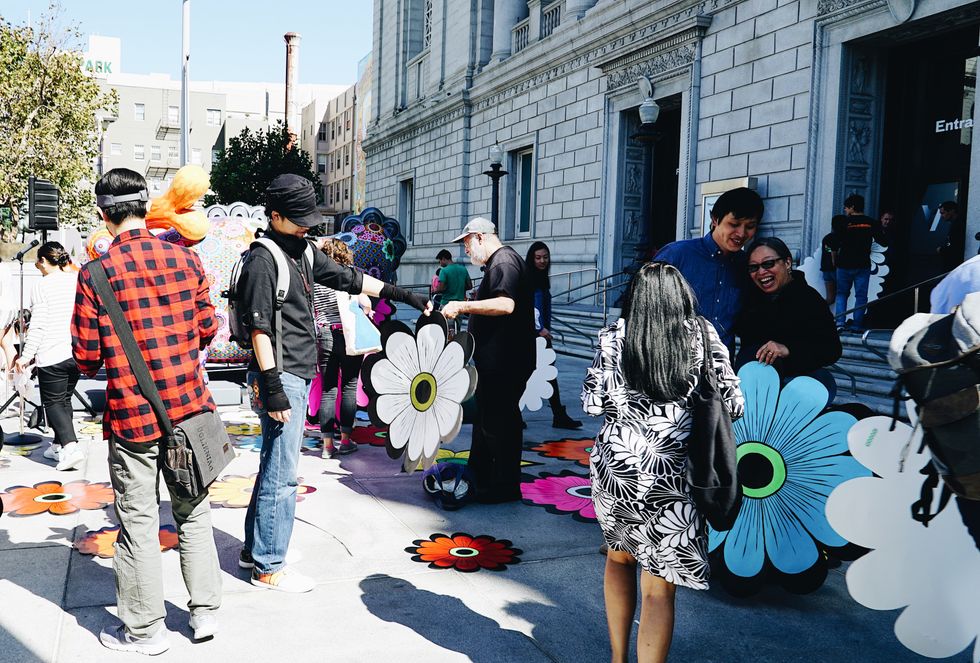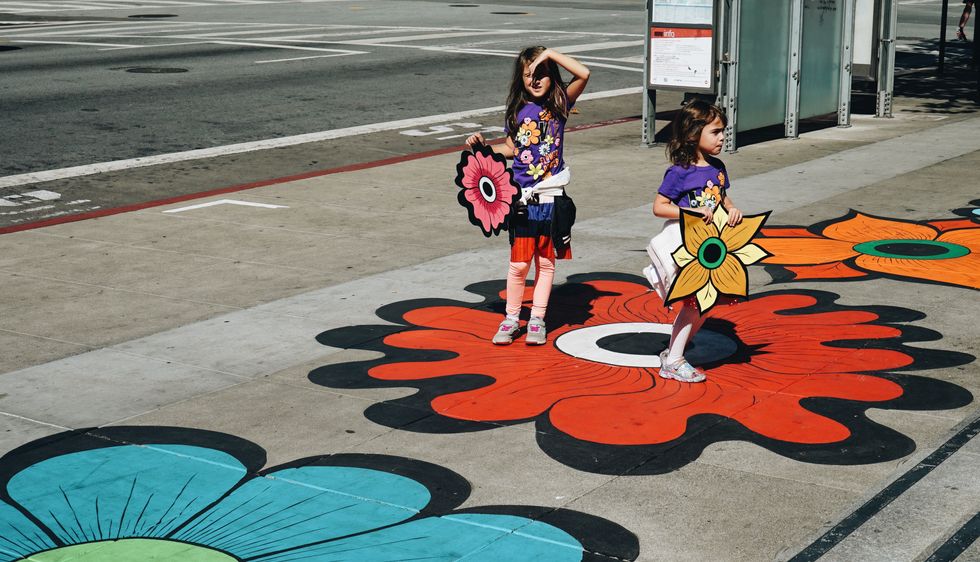You may have seen vivid flowers blossoming around the city as of late—painted florets in every color, both in paper form and directly swathed, on sidewalks, garage doors and gallery walls from Jones and Market streets to Haight-Ashbury.
These perennials are the signature motif of artist Megan Wilson, and they've graced neighborhoods around the world, including cities in Indonesia, Japan and the Philippines. They are strategically placed in high-traffic areas to bring consciousness to subjects such as abuse of corporate power, environmental degradation, income inequality and homelessness; thoughtfully spreading their messages of peace, nonconformity, and liberation through color and light. Often these blooms are fleeting, existing in impermanent installations such as this weekend's Flower Interruption in San Francisco, celebrating the conclusion of the Summer of Love anniversary at the Asian Art Museum.
The event also hinted toward an emblematic aggregation of Wilson's experience in art and politics—from her first time in Indonesia back in 2001, where she delved into the art community's response to the country's tumultuous political climate, to return home from that trip just in time for 9/11. These events led to Wilson's co-organizing of an international exchange and residency program called Sama-sama/Together, in which seven artists from San Francisco and Yogyakarta swapped places to collaborate on projects that hoped to "foster understanding of Muslim and non-Muslim cultures following 9/11." The next artist swap will occur in 2018, with an emphasis on geopolitics.
But on Sunday morning outside the Asian Art Museum, Indonesian gamelan music—with its dizzying sounds of metallophones and hand drums, rife with political and religious context and apropos for Wilson's work—gently cascaded through outdoor speakers. The artist's paper daisies, hand-painted in thick hues of vibrant crimson, teal, lime, and canary yellow, and each widely outlined in black—reminiscent of the one her mother had painted on her bedroom wall when she was two years old—waited in neat stacks upon the floor for what would soon become the culmination of her last four months spent painting petals on the sidewalks of Fulton and Larkin streets.
"Flowers are always seen in rituals, weddings, births, and death," says Wilson. "It's always the sign of both life and death and of a beautiful sharing...that's why I did this here today."
At 11am, Wilson and her crew began to carefully spread the blooms, more than 300 of them, across the pavement directly in front of the museum. A leather-clad, hoofed and hooded woman tied to a leash click-clacked by on her way to Folsom Street Fair, and paused to take it in. It is for moments like these that Wilson creates her installations—for that serendipity when worlds and walks of life collide and come together to appreciate art in the context of normal life, outside of museum walls.
"It's a matter of art being more accessible so that more people can be introduced to the arts and feel like it's an important investment of their time and money," explains Allison Wyckoff, the Asian Art Museum's associate director of public and community programs. Wyckoff tells me the story of the final flower that Wilson painted on the sidewalk out front; with multiple colors and slight variations from the rest, it was dedicated to a neighborhood trans woman who often walked by while Wilson was painting on the sidewalk. The two became friends, and the woman who had never even entered the museum because she "didn't feel welcome" became a lover of art.
Once all the flowers were placed and the ceremony concluded, closing Wilson's four-month flower-painting stint outside the museum, attendees were invited to take the daisies home as "symbols of peace and love, as well as reminders of the beauty, strength and fragility of life." As Wyckoff stated, Wilson's work is not meant for commercial consumption; it's meant for human consumption, and her work is ephemeral. So, "take a flower and gift a flower."
And just like that, within minutes, the flowers were all plucked from the ground and carried away, just as the artist intended.



